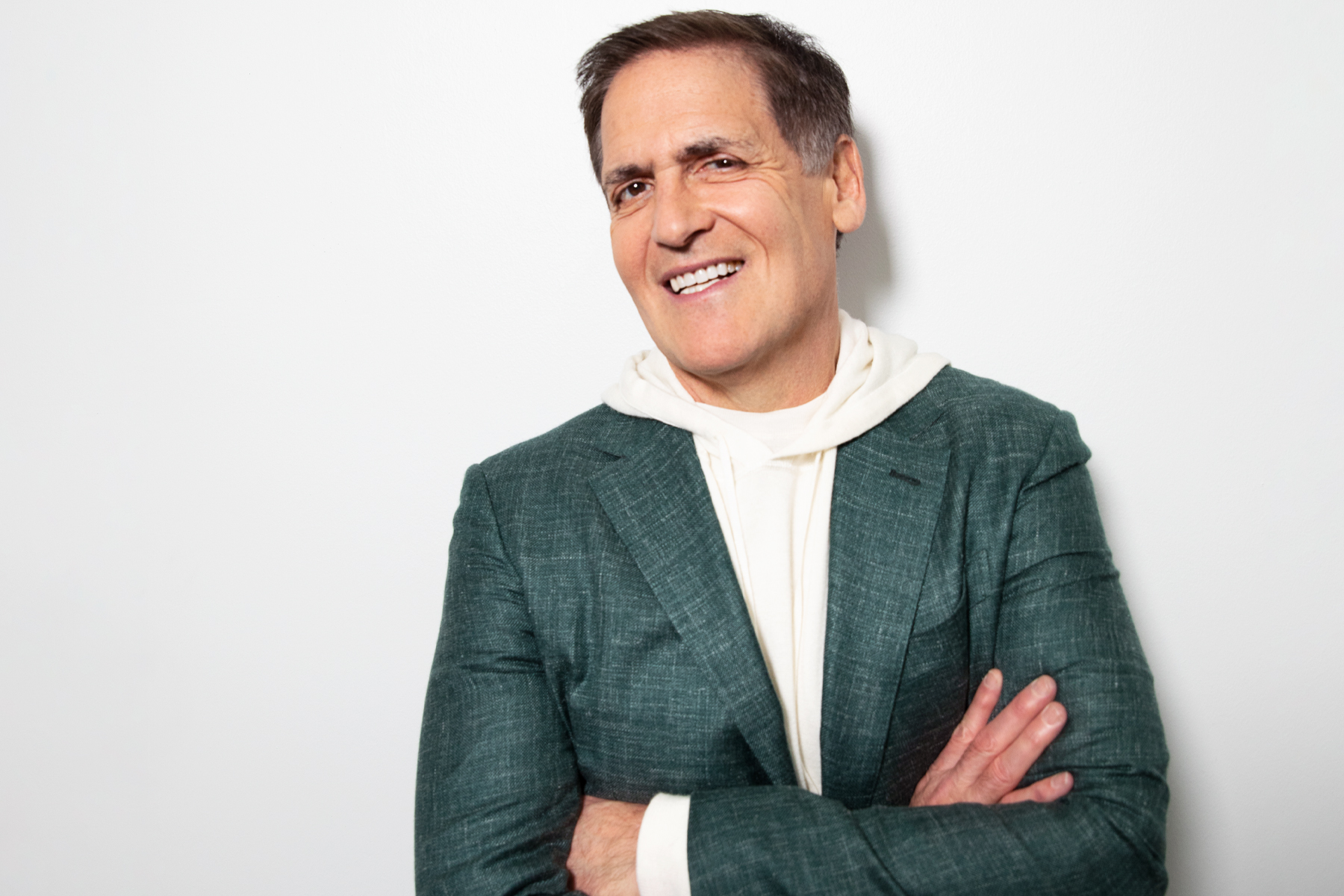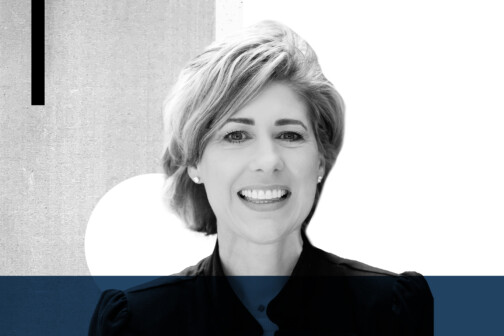As a young student, Alex Oshmyansky often found himself in special-needs classes that offered extra support for those with learning differences. But his life changed forever when he entered Mr. Heath’s fourth grade classroom in Littleton, Colorado.
Maybe he isn’t a slow learner, the teacher thought about his pupil, whose father is from Ukraine and whose mother is from Moldova. Maybe he just speaks Russian.
They worked together after school until Oshmyansky could read and speak as well as the brightest students. Then Heath gave him a math test. As it turned out, Oshmyansky didn’t belong in special-needs classes, though he was special.
He was a genius.
From there, Oshmyansky was put on an accelerated trajectory. He taught himself trigonometry and calculus. By 13, he was completing undergraduate college work and doing partial differential equations in the middle school cafeteria alongside half-eaten Frito pies and misplaced worksheets.
He took college courses by correspondence while attending his neighborhood high school, which allowed him to play sports and eventually be named homecoming king as he continued to zoom ahead in his studies. He graduated college one year after he finished high school, and then, at age 19, he was off to medical school. By the time most people receive a promotion at their first real job, he had earned his M.D. and a Ph.D. in mathematics, had started his own company, and had become a radiologist.
But a polymath like Oshmyansky was never going to be intellectually satisfied reading MRIs and CT scans all day at a hospital. This was a young man who had already taken a year of law school just for fun. With his education and his brain, he could have done just about anything.
He decided to take on one of the largest, most potent, and Byzantine enterprises in the world: the pharmaceutical industry.
On January 19, the Mark Cuban Cost Plus Drug Company—co-founded by Oshmyansky, who is also the CEO—launched its online pharmacy, selling generic medications to cash-paying consumers.
By 13, he was completing college work and doing partial differential equations in the cafeteria alongside half-eating Frito pies.
The setup is as straightforward as the company’s name. In fact, the name is more or less the business model, including the famous name at the front. (We’ll get there.) Oshmyansky and his team negotiate with manufacturers to set drug prices, and then the company transparently displays what it pays for its medicines. It adds 15 percent to offset the costs of the business, $3 for pharmacy handling, and $5 for shipping. And that’s all the customer pays.
The reaction from consumers and industry observers was immediate and overwhelmingly positive, tinged with wonder. It was almost as though they had witnessed someone perform a magic trick. How was this possible?
“It is perceived like an overnight success, but I have spent a long time trying to get it off the ground,” Oshmyansky says. With his beard and shaved head, the 37-year-old doesn’t look much like a magician. More like a YouTuber trying to expose the secret behind an illusion. “People used to call me Doc Quixote, tilting at windmills.”
When one considers Oshmyansky’s background, it is perhaps most surprising that he didn’t succeed more quickly. He usually does.
Before completing medical school, Oshmyansky won the prestigious Marshall Scholarship, which allowed him to study at any university in the United Kingdom. (Past recipients include former U.S. Supreme Court Justice Stephen Breyer, current Justice Neil Gorsuch, and LinkedIn co-founder Reid Hoffman.) He chose to study at Oxford, where he would earn a Ph.D. in mathematics in 2008 and his medical degree just a year later.
As if that weren’t enough, Oshmyansky founded a couple of different healthcare companies along the way. One was particularly auspicious. In 2007, he launched Pull Clean, which built self-sanitizing door handles. After medical school, he transitioned to CFO of Pull Clean’s parent company, while he continued with his radiology residency and pediatric radiology fellowship.
For most people, that would have been enough. But Oshmyansky’s longtime friend and sounding board, Dr. Paras Khandheria, could tell from their time training together to be radiologists at Johns Hopkins that Oshmyansky had too many side interests to be satisfied with only that. Khandheria encouraged his friend to get a remote radiology job that would allow him to pursue his other interests by day and read images at night.
Eventually, one interest took priority over all others. When healthcare CEO Martin Shkreli increased the cost of his company’s antiparasitic drug by 5,455 percent (from $13.50 to $750 per pill) in 2015, many were outraged. But Oshmyansky acted, because that’s what he does.
“A lot of us in healthcare see these problems, and we think about them,” Khandheria says. “What sets Alex apart is that he has the drive to act on it and ask, ‘What’s the next step on doing something about it rather than just complaining about it?’ ”
Oshmyansky had long been frustrated with the pharmaceutical industry, but the Shkreli story was too much for him. He had to do something. He began in 2015 (the same year he completed his fellowship) by founding a nonprofit pharmacy company that was going to make drugs and sell them at cost. He formed a 501(c)(3) and set out to raise funds.
But this first endeavor crashed and burned. Oshmyansky didn’t raise a dollar more than he had invested. “It failed spectacularly,” he says.
But he didn’t give up. He found his way to Y Combinator, the Silicon Valley technology accelerator that has launched Dropbox, Airbnb, Reddit, Twitch, and others. The mentors there gave him some invaluable advice. They told him that the nonprofit model wouldn’t be able to raise the needed funds. But they liked his idea and suggested he launch as a public benefit corporation instead. Similar to a nonprofit, a public benefit corporation has the fundraising advantage of allowing the company to offer shareholders dividends. After reworking the business plan, Oshmyansky founded Osh Affordable Pharmaceuticals in 2018, and soon raised $1 million. It was a drop in the bucket when it comes to the pharmaceutical world, but it gave him confidence that he was onto something.
Buoyed by that belief, he decided to do what many entrepreneurs have done before: write Mark Cuban a cold email with a business plan. In it, he described to the Dallas Mavericks owner and Shark Tank star the need to deliver cheaper drugs to patients and to do it faster. Cuban, as he often does, responded right away. He was enthusiastic about the project, enough to invest a small amount in the company.
“He is really smart, he works his ass off, and he is curious and agile,” Cuban writes in an email. “All great entrepreneurial traits.”

Before long, those traits convinced Cuban to increase his initial investment, so much so that, for the first time in the history of his career, he wanted his name on one of his businesses. Cuban told Guy Raz on a June episode of the How I Built This podcast that he wants to spend the second half of his life promoting the company’s mission and leveraging his platform to help people access affordable medications. It says something that, out of his considerable portfolio, this company is what Cuban wants to hang on his proverbial refrigerator.
After meeting with Oshmyansky, I wasn’t surprised that he would earn the trust of an investor like Cuban, who has called Oshmyansky one of the most intelligent people he knows. He is laser-focused, with a mind that operates on a plane above, but he is welcoming and understated at the same time. It wasn’t until our third interview that I discovered he was a child prodigy. Even then, he undersold his achievements.
But under his aw-shucks demeanor remains the fire that launched him on this mission for transparent pricing and affordable medicine. He can be a tiger at the negotiating table when he needs to be.
“I’ve seen him in meetings with vendors, and he gets very passionate about what we’re doing,” says Erin Albert, the pharmacy relations and chief privacy officer at Cost Plus. “We’re not just selling prescription drugs here, but we are truly trying to make a huge impact on public health to make prescription drugs affordable for patients. That drives him on every decision that he makes.”
The Mark Cuban Cost Plus Drug Company is actually two different operations: an online pharmacy and a fill-and-finish drug manufacturer.
For the online pharmacy, located at costplusdrugs.com, it isn’t as simple as asking generic drug manufacturers to add their drugs to the list on the website. Pharmacy benefit managers (PBMs), the companies that manage prescription drug benefits on behalf of health insurers, are responsible for the lion’s share of the market. The three largest PBMs—CVS Caremark, Express Scripts, and OptumRx—accounted for 79 percent of all prescription claims in 2020. By bucking the trend and selling medicine to Cost Plus, manufacturers risk driving a wedge between themselves and the companies that sell most of their product.
Despite the obstacles, the Cost Plus website currently lists more than 700 drugs. Cuban says he hopes to have 2,000 medicines available by the end of the year, and he is working to offer EpiPens and insulin. His company has partnered with Truepill to fill prescriptions and deliver medications from the manufacturer to the consumer. Operating outside of the insurance companies and pharmacy benefit managers—which often delay or deny medication delivery—is cheaper and more convenient. The savings are enough for many on several long-term medications to justify paying out of pocket.
Cuban says he hopes to have 2,000 medicines available by the end of the year, and he is working to offer EpiPens and insulin.
Since the pharmacy opened at the beginning of the year, the company’s Twitter feed has been filled with customers singing its praises. Jennifer Fariello Moldwin is a nurse practitioner in New York who recommends the service to many of her patients. A specialist in urology and gynecology, she has patients who were paying $300 to $400 per month for their medications and are now paying $30 per month via Cost Plus. “It’s timesaving for us, it’s cost saving for the patients, and it’s timesaving for the patients,” she says.
The buying and selling power of the PBMs often means that consumers pay more for medicine while generic manufacturers’ margins are squeezed. Oshmyansky has found that many of these drugmakers prefer to work with his company because, by eliminating the middle man, they can often sell to customers for less and pay manufacturers more.
“These companies don’t like being forced to sell to a wholesaler that drives them down to unsustainable rates,” he says. “We help make them more financially viable.”
The other half of the Mark Cuban Cost Plus Drug Company is a floating building.
When you walk by the blue-and-white facility in Deep Ellum, where rare medicines are readied for patients, you won’t see the air between the ground and the building. But it doesn’t rest on the earth. Instead, the entire 22,000-square-foot structure sits on 111 piles driven 70 feet into the bedrock, and its extra-thick slab sits 10 inches off the ground. This allows the massive building to move and flex as the ground shifts. That is necessary because the cracks in walls and sticking doors that we accept as the foundations shift on our houses won’t fly at this facility. Even the most minor crack could become home to bacteria that could contaminate lifesaving medications.
The factory also isn’t a factory in the traditional sense, using chemical reactions to produce medicine. Instead, it is a fill-and-finish facility, where receptacles are filled with sterile injectable medication and packaged for distribution. Many manufacturers use third parties to fill and finish vaccines and other drugs. It requires a high level of sterilization and accuracy, as this is the last step before the medications are sent to patients.
In addition to floating off the ground, the building is designed for an increasingly unpredictable climate, with state-of-the-art insulation keeping the inside temperate. On one sweltering 109-degree day this summer, the power went out at the facility, creating a potentially disastrous situation for the workers hustling to finish construction. But Oshmyansky said the building was so tightly sealed that it remained comfortable until the power came back on at the end of the day.
With NASA-level air filtration systems and perfectly smooth welds on the pipes, every detail of the facility was designed to make sure the environment remained sterile, smooth, and easily cleanable. There is a liminal room between the drug fulfillment area and the guts of the building. Picture the loading dock of your favorite space movie: the door has to close behind you before the door in front of you will open to keep contaminated air from getting into the space where the medicine is fulfilled.

There is also a robot. Housed in a room with no corners (easier to clean) and no soft materials that could absorb any contaminants, it will be responsible for packaging medication. The isolated chamber can be filled with hydrogen peroxide to sterilize it between uses, and the robot’s single-use parts can be removed and disposed of between fillings.
This versatility is key to the facility’s mission as it exists now: to bring orphan drugs to needy patients. Orphan drugs treat, diagnose, or prevent diseases for patient populations of fewer than 200,000 people. With that small base of potential customers, major drug manufacturers won’t go through the effort to make these medicines because they won’t be profitable enough to justify the investment. The Orphan Drug Act, passed in 1983, provides financial benefits for developing orphan drugs, but manufacturing, filling, and finishing can still be cost-prohibitive.
The robotic fill-and-finishing equipment can be sterilized and transitioned for new drugs, meaning it can serve these orphan populations without massive infrastructure changes. The facility will also specialize in pediatric cancer medications and have a room devoted to filling those medications that are both lifesaving for those with cancer and toxic for those without. When the operation is running this fall, Oshmyansky says, he hopes the facility will be able to run 24/7 with three shifts of about 20 employees.
The Mark Cuban Cost Plus Drug Company isn’t the first attempt to sell drugs at cost. But usually, when a company begins having some success in this arena, the PBMs come along to buy up their competition. The average pharmaceutical entrepreneur can’t say no to offers from healthcare conglomerates. That is why Cuban’s involvement is so crucial. He doesn’t need PBM money.
Oshmyansky says he has been surprised about how active Cuban has been in the company’s day-to-day business, going so far as to ping Oshmyansky about a delayed refrigerator delivery. For Cuban, this is a mission as much as a business, if not more.
“I want to disrupt the pharmacy industry,” Cuban writes. “I have some experience growing companies and know what it takes. So I’m very active, all day, every day.”
Still, getting the operation up and running has been no easy task in the heavily regulated pharmaceutical world. The number of boxes to check when building a facility like the one in Deep Ellum is almost unfathomable, especially for a team going through the process for the first time. There are endless decisions, FDA audits, and safety protocols.
But what makes Oshmyansky different is his ability to thrive in that kind of struggle. His rare combination of resilience, focus, capacity, positivity, and passion has put him in an excellent position to disrupt one of the most intractable industries.
The facility will also specialize in pediatric cancer medications.
Khandheria describes what sets Oshmyansky apart: “He’s obviously a brilliant person, but his true superpower is his ability to accept the pain that comes with dealing with bureaucracy.” Alex says, ‘This is the mission, and we can make it work.’ ”
Oshmyansky tells the story of a terrible weekend during his radiology training when two patients were prescribed $10,000-per-month heart medication. The patients were meant to apply for financial assistance and connect with a charity pharmacy, but because of all the red tape, it didn’t happen and the prescription was never filled. In a horrible coincidence, both patients died that weekend.
That human cost is what keeps Oshmyansky going.
Though the company is making an immediate impact, it hasn’t come easily. And he knows it won’t get easier. In truth, the man they once called Doc Quixote is the inverse of the Spanish nobleman who inspired the nickname. He is not inventing foes to make his life more impressive. The adversaries against lowering pharmaceutical cost and improving transparency are all too real, and he is managing to fight them without making much of himself.
Get the D CEO Healthcare Newsletter
Author






